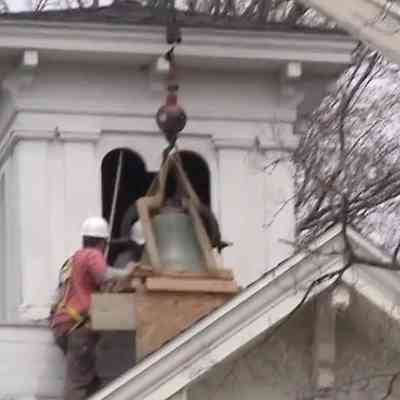
Bell returned to Douglas Union School
[synopsis needed] - [if you found this video informative, consider sending your summary of its content to the SDHC Archives at [email protected].]
You can visit the History Center Archives in person to learn what’s in our collection, but much of the material is now indexed in the CatalogIt Hub. On this page, you can browse through several sets of items or use a search box to look for something specific in the collection.

[synopsis needed] - [if you found this video informative, consider sending your summary of its content to the SDHC Archives at [email protected].]
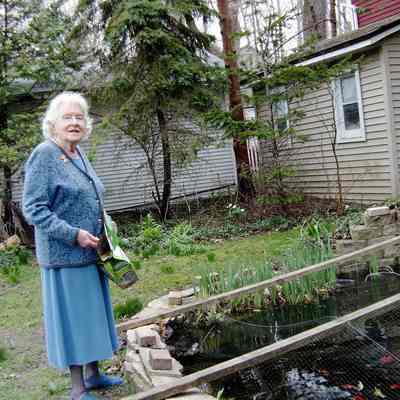
Betty Mulder SDHS ORAL HISTORY INTERVIEW 4/09 SYNOPSIS We found Betty’s 333 Lucy Street home by spotting her sitting in her three season porch watching for us. She had just returned from a recruitment program at Friendship Village and reported by being a bit agitated by the experience. “I felt I needed to escape from there”, she reported. It didn’t take long before we understood that her home hared with the “love of her life” for 31 years could not easily be separated from her identity. Her husband, Warren, had passed just over a year ago but he was still very much present in every nook and cranny of the property. She first walked us out to backyard to show us Warren’s fish pond into which she sprinkled fish food. This ritual seemed to be one of her many connections to his spirit. On entering her house we were introduced to Warren’s vast hobby production of stuffed winged and four-footed animals covering most floors, shelves and ceiling areas. Inside the front door two coyotes blocked our entry, one with a slip of paper in its mouth containing a handwritten note from Betty stating her desire not to be medically revived if facing irreversible illness. Besides Warren’s vast collection of professionally done taxidermy creations crowding out space, family and travel photos, travel artifacts, antiques, and carious meaningful collections left little room to congregate. Two electrically driven lounge chairs together faced a fireplace almost hidden behind fox, beaver, skunk, weasel and other mammals not likely to be so closely gathered in the wild. Betty shared stories about her first 12 years in the South Shore area of Chicago and she noted numerous Saugatuck and Douglas residents who originated from that area. As a child she spent summers with her grandparents on a large tract of land on the South side of Lucy Street between Butler and Holland streets. Her home was the oldest, having been brought from Singapore ahead of the encroaching dunes. The earliest memories of summers in Saugatuck that Betty recalled were of hikes over Mt. Baldhead to Oval Beach with friends, working at the soda lounge, and nightly movies at the Pavilion. About the same time that she graduated from high school, Betty’s father, Willard Watson, was assigned as an Internal Revenue Service director to the Holland area, allowing him to live in his favorite place and Betty to attend and graduate from Hope College. In the early 1960s, she suffered a serious leg injury in a car accident that left here “disabled”. This did not curb her active professional life as a Spanish teacher at the elementary through college levels. “High school kids were my favorite because they were crazy” she professed. Details about Betty’s family of origin and her married life can be found in the SDHS archive 1988 edition of History of Western Allegan County Michigan F442, F443, F578.
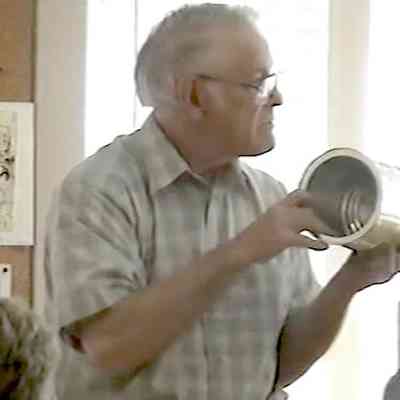
Bill Lankton's 2004 "Tuesday Talk" about the Presbyterian Camps through the years concluding with a humorous question and answer session and slide show. Introduction and announcements by James Schmiechen. The Tuesday Talks are a series to one-hour, public lectures about local history presented by the Saugatuck-Douglas History Center.
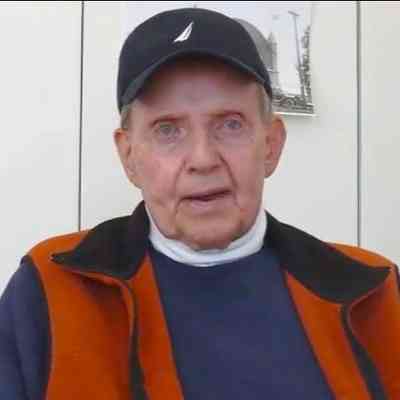
[synopsis needed] - [if you found this video informative, consider sending your summary of its content to the SDHC Archives at [email protected].]
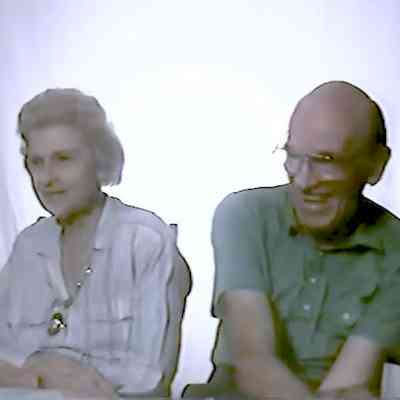
[synopsis needed] - [if you found this video informative, consider sending your summary of its content to the SDHC Archvies at [email protected].]

[synopsis needed] - [if you found this video informative, consider sending your summary of its content to the SDHC Archives at [email protected].]

BOB & LUE CRANE ORAL HISTORY INTERVIEW 2/10/09 About Growing Peaches In the 1920-40 period, the Fennville area produced the largest volume of peaches. Bob heard from an Army friend who was attending the horticultural school at the University of North Carolina that a professor had shown his class a map indicating where the best peaches were grown. The map indicated that the Michigan side of Lake Michigan had the perfect conditions for developing tasty peaches. The cool prevailing breezes off of Lake Michigan slowed the maturing of the fruit to maximize flavor. The Crane farm began to specialize in fruit tree production in the late 1930s but began significant expansion when Bob returned from the Service in the late 40s. As time went on, they introduced new and better varieties and more efficient farming methods. Peaches were initially shipped by boat in Douglas-made baskets from Pier Cove. Bob recalls that in later years he would load up his truck with peaches and drive them down to Hartford where they would be unloaded, packed, cooled down and shipped by train to Chicago. Bob’s father eventually trained Lue to drive the truck and she became the best-looking hauler in the area. She reportedly held the farm record for the most number of hauls in a day because, as she says, “Everyone got out of my way when they saw me coming.” They currently grow nine varieties of peach but apples are currently their primary fruit crop. Bob Crane’s family began general farming in Fennville in the 1870s. During the Great Depression, Bob, the youngest of six children, recalls his family farming with six cows, chickens and a pair of horses. He recalls having to come home from basketball practice at Fennville High School to milk the cows, which was no problem because most of his teammates did the same thing. Rob, the oldest Crane son, designs and runs the annual cornfield maze challenge and the very scary haunted maze. In the latter venue, a crew of spooky folks in a variety of macabre outfits terrorize paying customers. One monster-player, Fabian the chainsaw operator, while waiting in the tall corn to spook an unwary patron overheard a young woman customer tell her friend that she had to relieve herself. Fabian fired up the chainsaw and leapt out of hiding behind the embarrassed lass who shouted, “Wait until I finish.” During the first year of the haunted maze, a woman emerged to report that a gorilla was attacking people in the maze. Rob reassured her that there was no gorilla among their haunted actors. She insisted she had been accosted by a gorilla and again she was reassured that she must have been mistaken. Later that evening Rob ran into one of his crew who reported having snuck in a gorilla outfit without telling anyone. Such is entertainment on the Crane farm. Bob as a Flyer In 1935 Bob obtained a ticket for a flight on a bi-plane. At 15, during the war, he, his father, mother and brother Albert learned to fly in a Piper Cub at the Park Township field. At that time gasoline was free for private airplanes to encourage more people to develop flying skills. The government encouraged people to take free basic flying lessons in an attempt to eventually increase recruits for the Army Air Corps. Although only 15 at the time, Bob was allowed to train and eventually solo. Bob gives his grandmother, born 1862 and having ridden in everything from an ox cart, her first plane ride. He took off from Lake Hutchins using skis in the winter. Bob recalls landing in corn fields and flying out of the old Douglas airfield. Both his father Bob and Lue met when Lue just finished high school and Bob was out of the Service. Lue’s protective father allowed her to date Bob only because he knew Bob’s brother Albert to be a fine person and assumed Bob would be equally upright. The young couple’s first date was when Bob flew a plane to pick her up in Port Huron, much to her father’s chagrin. Lue’s brother-in-law had been one of Bob’s teachers in high school. Several generations of Cranes attended the small brick district school at M-89 and 60th. During the Great Depression, “The cities had the soup kitchens, but the country had the farmers who typically fed anyone who came to the door.” He and his sister Beth took turns feeding folks at the door. No one had money but they always had food, fresh and put up in Ball jars. Around 1934 when Bob was starting high school he recalls classmates talking about who was rich and who was poor. His mother explained that they had no money but they did have plenty of food and good health. The death of one of the horses, part of a team. The team of horses were eventually sold on Mackinaw Island where they were well cared for. When they visited the island later they found the team with significant recognition. Flew with 4 kids in their own plane to Iowa. Gary and Ken took lessons and Bob at 50 did instrument qualification. Synopsis by John Shack
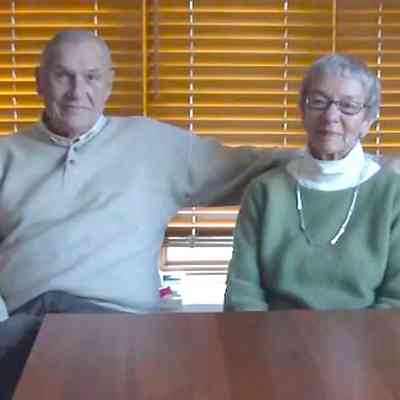
BOB AND MARY MASON Saugatuck Retirees Who Made a Difference March 19, 2011 Charlaine and John Shack met Mary and Bob Mason for their oral history interview at the Mason's Grant Street home of almost 30 years. The interview was hastened by the news that they were leaving Saugatuck to live in an assisted living community near Chicago where they would be closer to family. This interview was done in three parts: Chapter 1 covers Bob and Mary's lives up to their retirement move to Saugatuck. This includes their early influences, schools, meeting in college, career activities, their three daughters, Mary's volunteer and work activities, Bob's significant law career, and their Great Lakes sailing adventures. Chapter 2 covers Bob's decision to leave the practice of law and try his hand at running a business in Holland, MI. It includes the extensive involvement of both Bob and Mary in numerous community developments including dunes conservation, library support development, historic preservation, and interface with several boards for which Bob constructed bylaws. In addition, Mary worked hard for the preservation of a Democratic party in Allegan County. Bob's description of the Denison south property purchasing struggle is especially enlightening. Chapter 3 contains powerful statements made by both Bob and Mary about the future challenges of the Saugatuck area. Dune Conservancy Lake Kalamazoo cleanup and dredging Area government consolidation Historical preservation

Video recording of Peggy Boyce presenting a lecture about the Robinson and Boyce families. The presentation happened at the Saugatuck-Douglas History Museum on July 16, 2002.
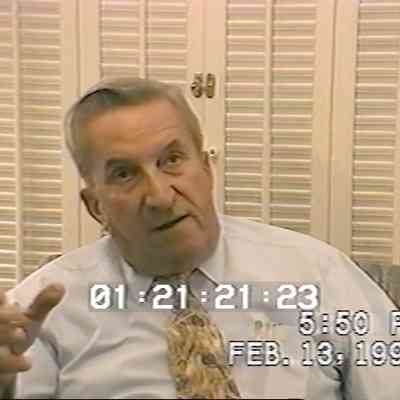
[synopsis needed] - [if you found this video informative, consider sending your summary of its content to the SDHC Archvies at [email protected].]